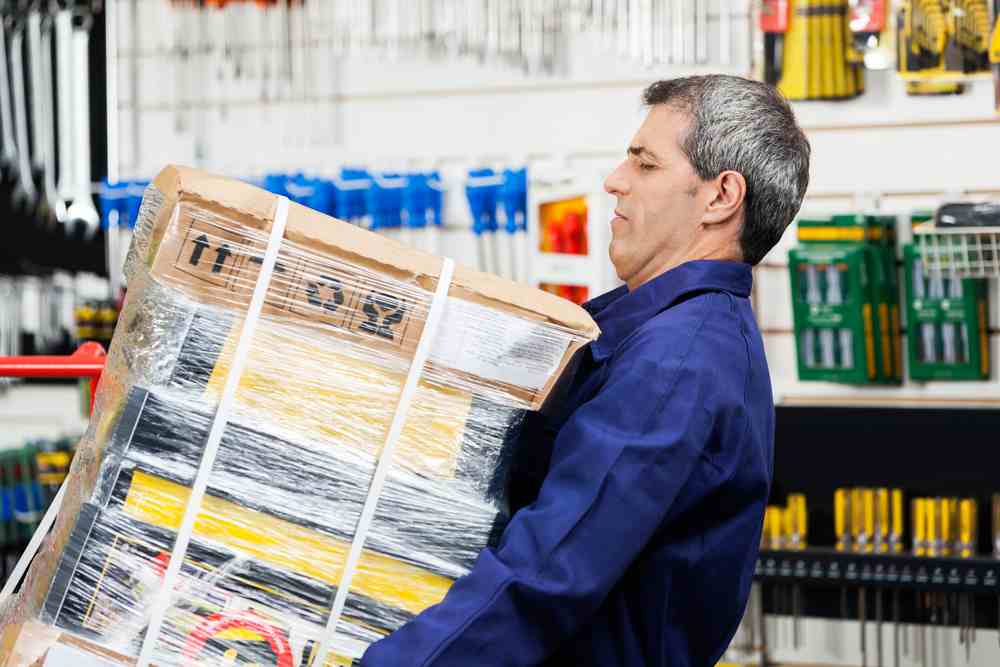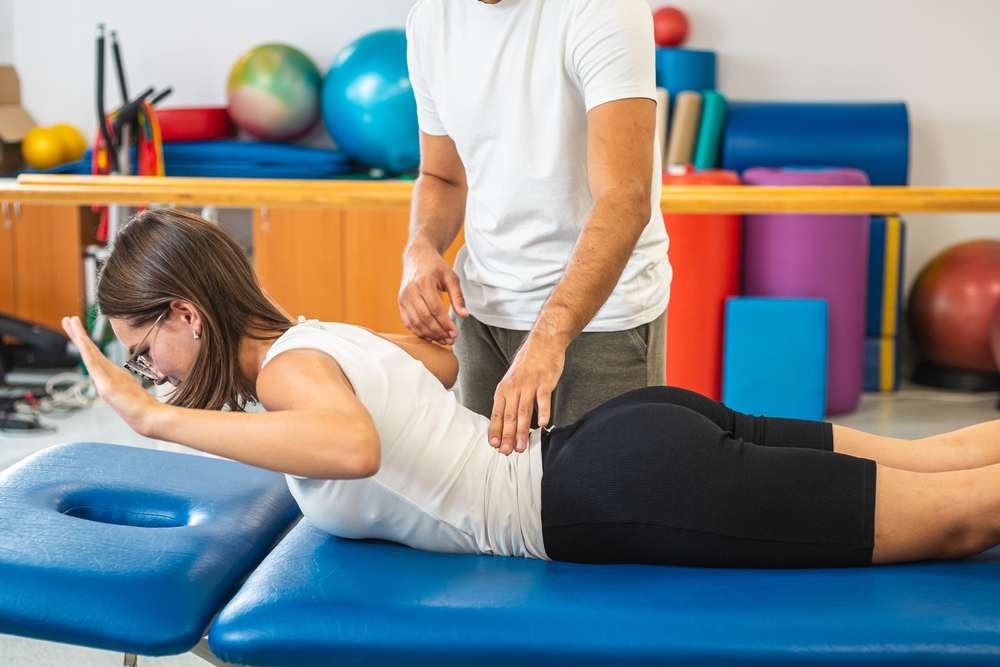If you’ve ever suffered from a bulging disc, you know that this injury can be excruciating and have likely sought relief. While some herniated or bulging disc pain may resolve on its own or with mild intervention, without proper treatment, the injury can lead to permanent issues that cause more pain than the original problem. In some cases, an untreated bulging disc can even lead to permanent nerve damage. To understand why it is so important to treat a herniated disc quickly and properly, keep reading.
What Is a Bulging Disc?

Rather than a single bone, the spine is made up of small bones stacked on top of each other, called vertebrae. To prevent the vertebrae from rubbing against one another, there are rubbery cushions between each bone. These spinal discs are made up of a tough outer covering (the annulus) and a soft, jelly-like center (the nucleus).
These discs are vulnerable to injury during a traumatic event like a car accident but more commonly degrade over time as a result of wear and tear. Damage to the discs typically happens in four stages:
- Stage 1 – Bulging: Flattening of the disc causes some or all of the disc’s outer shell to bulge out further than normal.
- Stage 2 – Protrusion: The nucleus begins to bulge from the center of the disc but does not break through the annulus.
- Stage 3 – Extrusion: The nucleus of the disc breaks through the annulus.
- Stage 4 – Sequestration: A fragment of the disc breaks off and migrates into the spinal canal.
The first two stages are considered incomplete herniations of the disc, while 3 and 4 are complete herniations. Not all discs will move through every stage.
Herniated discs are extremely painful because of pressure on the nerves surrounding the spine. Any small piece of a disc that moves outside of the vertebrae’s space will enter the spinal canal, causing pressure on nerves in that area. This pressure can lead to pain, as well as numbness and tingling in the areas of the body controlled by that nerve.
Common Signs of a Bulging Disc
As a disc herniation worsens, you may have more obvious signs of the injury. But the sooner you are able to identify what is a bulging disc and seek treatment, the more likely you are to resolve the issue and avoid serious issues down the line. While it can be difficult to identify the exact cause of back pain, there are three main signs to look for that indicate a potential disc injury.
Pain when sitting
Any activity that places pressure on the lower spinal discs can exacerbate issues related to a bulging disc, and sitting exerts a huge amount of pressure in this area. When a disc is herniated, the increased pressure can amplify the issue, aggravating the lower back.
Sciatic, or radiating pain into the leg
When disc damage occurs in the lower back like a bulging disc, the nerves that are most often impacted are those in the spinal nerve roots. Any compression or irritation of these spinal nerve roots can cause their function to be altered. This leads to numbness, weakness, and/or tingling along the front and/or back of the leg, thigh, and even foot, usually on only one side. Because of the affected sciatic nerve, this issue is sometimes referred to as sciatica.
Pain caused by specific activities
Certain activities may irritate disc injuries more than others. These include bending down or forward, lifting a heavy object, pushing and pulling heavy objects, coughing, and sneezing. The pain usually comes on quickly, though it may last for a time after the activity.
What Causes a Bulging Disc?

A herniated disc or bulging disc is usually not brought on by a single incident but instead is a cause of degeneration over time. However, someone who is already prone to the injury could see it brought on suddenly by a force or trauma, and some injuries are enough to cause a healthy disc to become herniated.
Risk factors for a bulging disc include:
- Having a sedentary lifestyle with little physical activity.
- Smoking cigarettes.
- Heavy lifting and other continued strain on the lower back over a long period of time.
- Back muscles that have been weakened due to other injuries.
- Poor posture during sleep, sitting, standing, or exercising.
- Being overweight or obese.
- Participating in high-contact sports or activities.
- Not using proper shoes during activities like running.
- Having a physically demanding job that includes lifting, pushing, pulling, bending, or twisting.
- Being genetically predisposed to developing a herniated disc.
- Frequent driving, due to prolonged sitting and the vibration of the motor vehicle.
- Not drinking enough water to keep the discs properly lubricated.
However, the biggest determinant of risk is often age. As we age, the discs lose their flexibility, which makes them more likely to tear or rupture when even slightly strained. Most people will not be able to pinpoint a single cause of their herniated disc unless there is a traumatic event like a car accident that causes the issue.
Complications of an Untreated Bulging Discs
A bulging disc is the mildest grade of disc herniation and means no damage has occurred to the disc itself yet. Without proper treatment, this injury is more likely to progress to a higher grade and cause more symptoms or even permanent issues.
The most common outcome is that the bulging disc continues to be irritated and protrudes into the spinal canal, herniates, or even migrates into the spinal canal entirely. When this happens, symptoms worsen, and treatment is more invasive. It is even possible to require surgery to remove a damaged disc, either replacing it with an artificial disc or fusing the surrounding vertebrae together to prevent movement.
If the protrusion occurs for a long period of time, it can also permanently damage the nerves that it impacts. If you’re wondering, “Can a bulging disc get worse?” the answer is yes, especially if left untreated for a long period.
In very rare cases, disc herniation can also compress the entire spinal canal, along with all the nerves of the cauda equina. The cauda equina is a group of long nerve roots, resembling a horse’s rail, that continues after the spinal cord ends into the spinal canal.
Worsening symptoms, especially when you are getting treatment, can be the first sign of this progression, especially if they begin to hamper your daily activities. Any issues with bladder or bowel control and dysfunction can indicate that there is an issue with the cauda equina and should be treated as an emergency. Additionally, the progressive loss of sensation in the areas a saddle would touch, called “saddle anesthesia,” is also something that calls for emergency medical attention.
Treating a Bulging Disc
 You might be wondering, “Do bulging discs heal?” A bulging disc can cause significant discomfort, but the good news is that there are numerous treatment options available to prevent it from worsening. Addressing the issue early can make recovery faster and easier, reducing the risk of further complications. Regardless of where you are in your healing journey, seeking professional care is crucial.
You might be wondering, “Do bulging discs heal?” A bulging disc can cause significant discomfort, but the good news is that there are numerous treatment options available to prevent it from worsening. Addressing the issue early can make recovery faster and easier, reducing the risk of further complications. Regardless of where you are in your healing journey, seeking professional care is crucial.
Most of the time, the answer for can bulging disc heal is yes and that it can be treated without surgery. The best approach depends on factors such as the severity of your symptoms, how long the issue has been present, your age, and your overall health. Treatment typically aims to relieve pain, restore normal function, and prevent future problems.
12 Non-Surgical Treatment Options for a Bulging Disc
1. Medications
- Over-the-Counter Pain Relievers: Nonsteroidal anti-inflammatory drugs (NSAIDs) like ibuprofen help reduce pain and inflammation.
- Prescription Medications: Muscle relaxers or stronger pain relievers may be prescribed for severe pain but should always be taken with caution.
2. Physical Therapy
A tailored exercise routine designed by a physical therapist to help relieve nerve pressure, improve your posture, and prevent future spine and disc issues.
3. Chiropractic Care
Spinal adjustments help realign the spine, reducing pressure on the affected disc and alleviating long-term back pain.
4. Ultrasound Therapy
Sound waves create small vibrations that relax the soft tissues in your back to help relieve pressure on the affected nerve.
5. Therapeutic Massage
Targeted massage techniques can provide short-term pain relief while also promoting muscle relaxation during treatment.
6. Heat and Cold Therapy
- Cold Therapy: Apply ice packs to reduce swelling and numb pain in the initial stages.
- Heat Therapy: Use a warm compress to help relax sore muscles and improve circulation.
7. Activity Modification
- Avoid heavy lifting and strenuous activities that may make your pain worse.
- Balance rest with light movement, like walking for short periods to help prevent stiffness and weakness.
8. Braces and Support Devices
Wearing a brace or other type of supportive device to provide compression and stability, reducing strain on the affected area.
9. Steroid Injections
There are multiple types of steroid injections or a bulging disc and pain relief. Epidural steroid injections provide long-lasting relief by reducing inflammation around spinal nerves. Oral steroids help with inflammation and swelling in severe cases.
10. Anti-Convulsant Medications
Originally developed for seizures, these medications have also been identified to effectively treat nerve pain associated with a bulging disc.
11. Spinal Decompression Therapy
Spinal decompression therapy is a non-surgical technique that uses controlled traction to alleviate pressure on the affected spinal disc, which can provide months of symptom relief.
12. Electrotherapy
- TENS Therapy: A transcutaneous electrical nerve stimulator (TENS) machine helps reduce pain.
- Advanced Options: PENS (Percutaneous Electrical Nerve Stimulation) and rTMS (Repetitive Transcranial Magnetic Stimulation) offer further relief.
When Is Surgery Necessary?
While most people won’t need surgery, it is generally considered when non-surgical treatments fail or if your symptoms get worse. Here are some examples of surgical procedures for a bulging disc.
Potential Surgical Procedures
- Discectomy: A discectomy involves an incision made in the back or the neck to remove the disc. A microdiscectomy is a minimally invasive procedure using a small incision and a camera-equipped tube to remove a portion of the disc.
- Lumbar Laminotomy: A small piece of bone called the lamina is removed from the vertebra to access and treat the herniated disc. This may be performed alongside a discectomy or as a separate procedure.
- Spinal Fusion: After removing the damaged disc, two vertebrae are fused together to stabilize the spine and reduce pain.
- Artificial Disc Replacement: In rare cases, an artificial disc made of plastic or metal replaces the damaged disc to restore mobility and support.
Whatever treatment is best for your situation, it is important to both see the plan through and continue any preventative treatments you are given. Having a bulging disc once makes you more likely to experience the same thing in the future, so working to actively manage your health and stability is critical.
What Is a Bulging Disc Treatment Like at AICA Marietta?
At AICA Marietta, our team of specialists is dedicated to not only treating disc injuries but also creating plans to keep our patients healthy in the future. With a mix of orthopedists, neurologists, physical therapists, chiropractors, and other specialists, AICA Marietta is able to provide a holistic treatment plan that is custom-built for each patient’s needs and symptoms. We can also help to develop a properly documented treatment program for your bulging disc settlement that prevents future pain and injury, ensuring you are your best self in the future. Visit us in Marietta today to begin feeling relief.